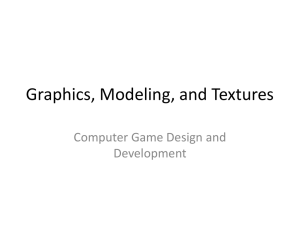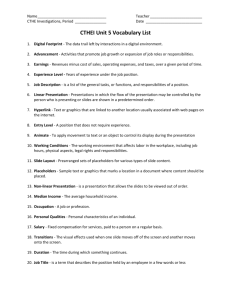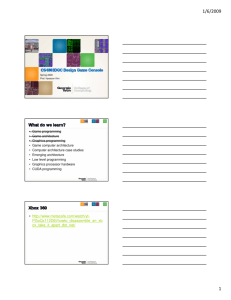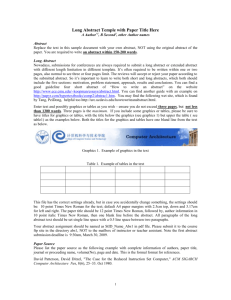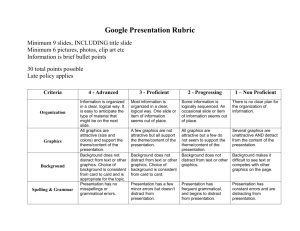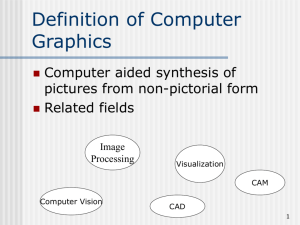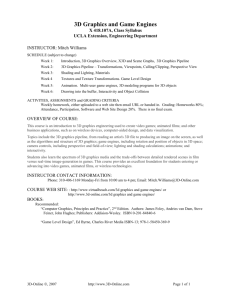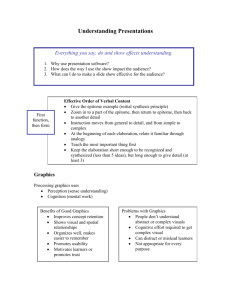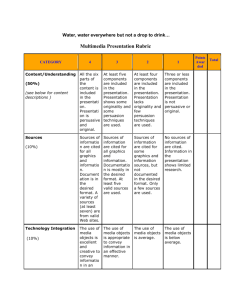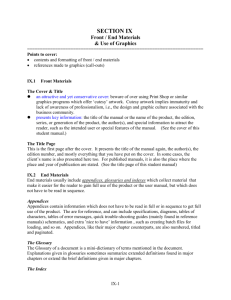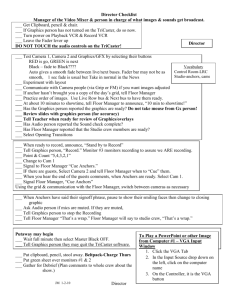Notes 8_31
advertisement
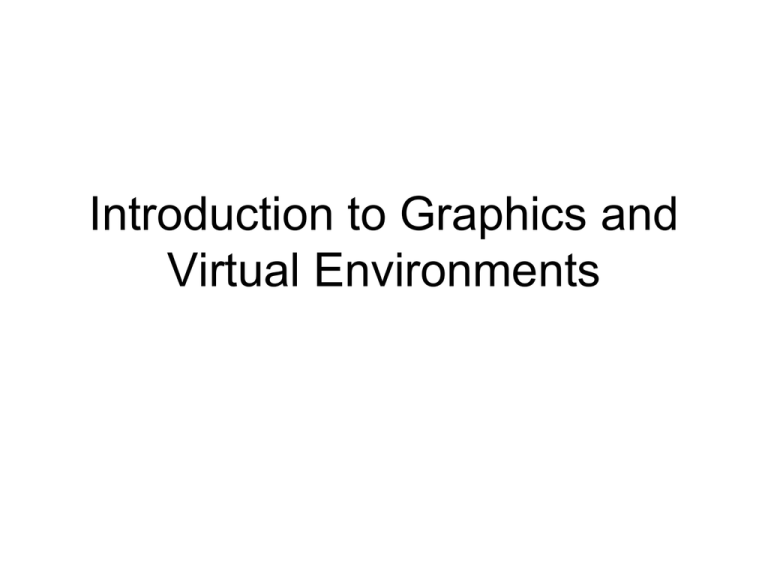
Introduction to Graphics and Virtual Environments 3D Graphics and Virtual Environments 1) Model a 3D object: polygons, curves, colors, textures, transformations 3D Graphics and Virtual Environments 2) Render the 3D objects: visibility, lights, camera, general illumination (shading, reflections, shininess, etc.) 3) Display the objects on a 2D screen: color, perspective, hardware (additional lights, shininess, camera position in 2nd picture) 3D Graphics and Virtual Environments How do we move to a virtual environment? What else is needed? Actions and animations, behaviors, interaction, immersion, audio, touch, gestures, smell, speech, stereo viewing, maybe more realism, physics Some basic movement in Virtools: intro.cmo Outline of Course • Two themes in the course: studying 2D and 3D computer graphics; and studying virtual environments and their applications. We will be implementing many of the ideas on a computer. • Hands-on; project-based • Practical information: web site is at cs.conncoll.edu/com209 • Syllabus info on line; be sure to come to class prepared: readings are found on Moodle. • Coordination and collaboration with other classes: Art 222: Techne/Technology: Investigations in 3D ART301: Sketchbooks and Artist Books BOT225: Systematic Botany and the Local Flora Assignment for Wednesday Syllabus info on line; be sure to come to class prepared: reading in the McConnell book; Processing1 sheet We’ll start this in class See how far you can get in this assignment; let me know if you have problems. Definition of Virtual Reality • Long history of using media to communicate, inform, express; VR is one in a long line of technologies or media • What is VR? My working definition: – Interactive, multisensory, 3D computergenerated; involves some degree of immersion Definition (from Sherman & Craig: Understanding Virtual Reality) • Virtual world: not necessarily computer or 3D, imaginary • Immersion: sense of experiencing the alternate environment – physical and mental- the term “presence” is also used: sense of being there (mental immersion) • Sensory (multimodal) feedback: sound, sight, touch • Interactivity: affect the world, navigate, physics, collision, speech, behaviors Additional Terms • Augmented reality: combination of virtual reality and reality • Telepresence: interaction with a remote environment • Cyberspace: virtual location for communication Some possible elements of a VE • Database of 3D objects • Textures, images, video, sounds • Position trackers, gesture recognition (Kinect), haptics (touch), stereo viewing, joysticks, treadmills, gloves, eye tracking, other hardware • Interaction with objects, avatars; navigation; animation; speech • Can be one person or many • Computer monitor or large room Important ideas • Realism vs real-time • “Reality is virtual” (Mel Slater) • VR is a prototypical liberal art: CS, AI, physiology and anatomy, physics, psychology and cognitive science, perception, music, art, mathematics • Applications are far-ranging: medicine, science, education, architecture, entertainment, anthropology, arts, psychology, museums, flight simulators Some History of VR and Computer Graphics • ppt link



